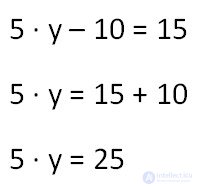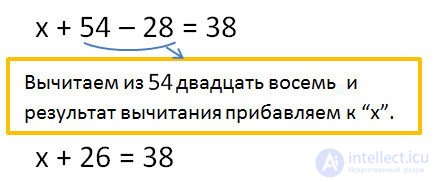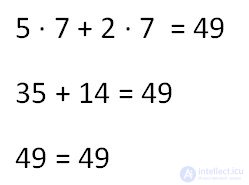Lecture
By complex (composite) equations, we mean equations that contain two or more arithmetic operations.
The solution of such equations is performed according to the same rules that we considered on the page “Solving simple equations of grade 5” in the same topic. But the solution of compound equations is made in a certain sequence.
Consider the equation:



To find the unknown deductible, add the deductible to the difference.

To find an unknown factor, it is necessary to divide the product into a known factor.


That's right. So the equation is solved correctly.
Some complex (composite equations) can be solved in another way. Knowing and being able to apply the properties of addition and subtraction, as well as the properties of multiplication and division, the equations are solved as follows.
Consider the equation.
(x + 54) - 28 = 38
To subtract a number from the sum, you need to subtract this number from one term and add the result of the subtraction to the other term.

If there are expressions in the equation that can be simplified, then we first simplify the expressions, and only after that we solve the equation.
Solve the equation.
5x + 2x = 49
The left side of the equation can be simplified. Let's do it.
7x = 49
Now we solve a simple equation according to the rule of finding an unknown factor.
x = 49: 7
x = 7
After completing the example, run the check.

Comments
To leave a comment
Arithmetic
Terms: Arithmetic